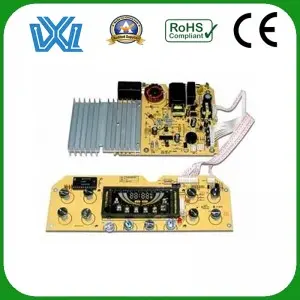Printed circuit boards (PCBs) are often overlooked in the world of modern technology, yet they play a key role in nearly every electronic device we use today. Whether it’s your smartphone, laptop, or even the smart appliances in your home, PCBs are the unsung heroes that make these devices work seamlessly. In this blog, we’ll delve into the world of PCBs, discover what they are and how they work.
Body:
1. Basic knowledge of PCB
A printed circuit board (PCB) is a thin sheet of insulating material (usually fiberglass) with conductive metal traces etched on it. These tracks serve as connection paths for electrical signals between electronic components. The size, complexity and number of layers of the PCB can vary depending on the requirements of the device.
2. Components of PCB
PCBs are made up of various components including resistors, capacitors, diodes, transistors and integrated circuits (ICs). These components are soldered to the PCB, making electrical connections between them. Each component has a specific role in the circuit and contributes to the overall functionality of the device.
3. How the PCB works
A PCB works by allowing electrical signals to flow between different components, ensuring they communicate and perform their assigned tasks. Metal traces on the PCB provide the necessary paths for signal transmission. Components on the PCB are strategically placed according to the circuit design to optimize function and minimize interference.
4. Manufacturing process
PCBs are manufactured through a series of steps. First, circuit design is performed using computer-aided design (CAD) software. The design is then transferred to the PCB using a photolithographic process. The board is then etched to remove unwanted copper and leave only the desired traces. Finally, the components are soldered onto the board and undergo quality checks before being integrated into the electronics.
5. Advantages and disadvantages of PCB
PCBs have many advantages such as reliability, compactness, ease of mass production, and efficient signal flow. However, they also have limitations, including inflexibility, high initial setup costs, and the need for specialized fabrication equipment.
Conclusion
Printed circuit boards (PCBs) are the backbone of modern electronics, enabling our everyday devices to function seamlessly. Knowing how a PCB works can enhance our appreciation of the complex technology behind a gadget. From the basic structure to the manufacturing process, the PCB is a key element driving technological progress. As we continue to embrace advancements in the digital realm, PCBs will undoubtedly continue to evolve and shape the future of electronics.
Post time: Jul-12-2023

